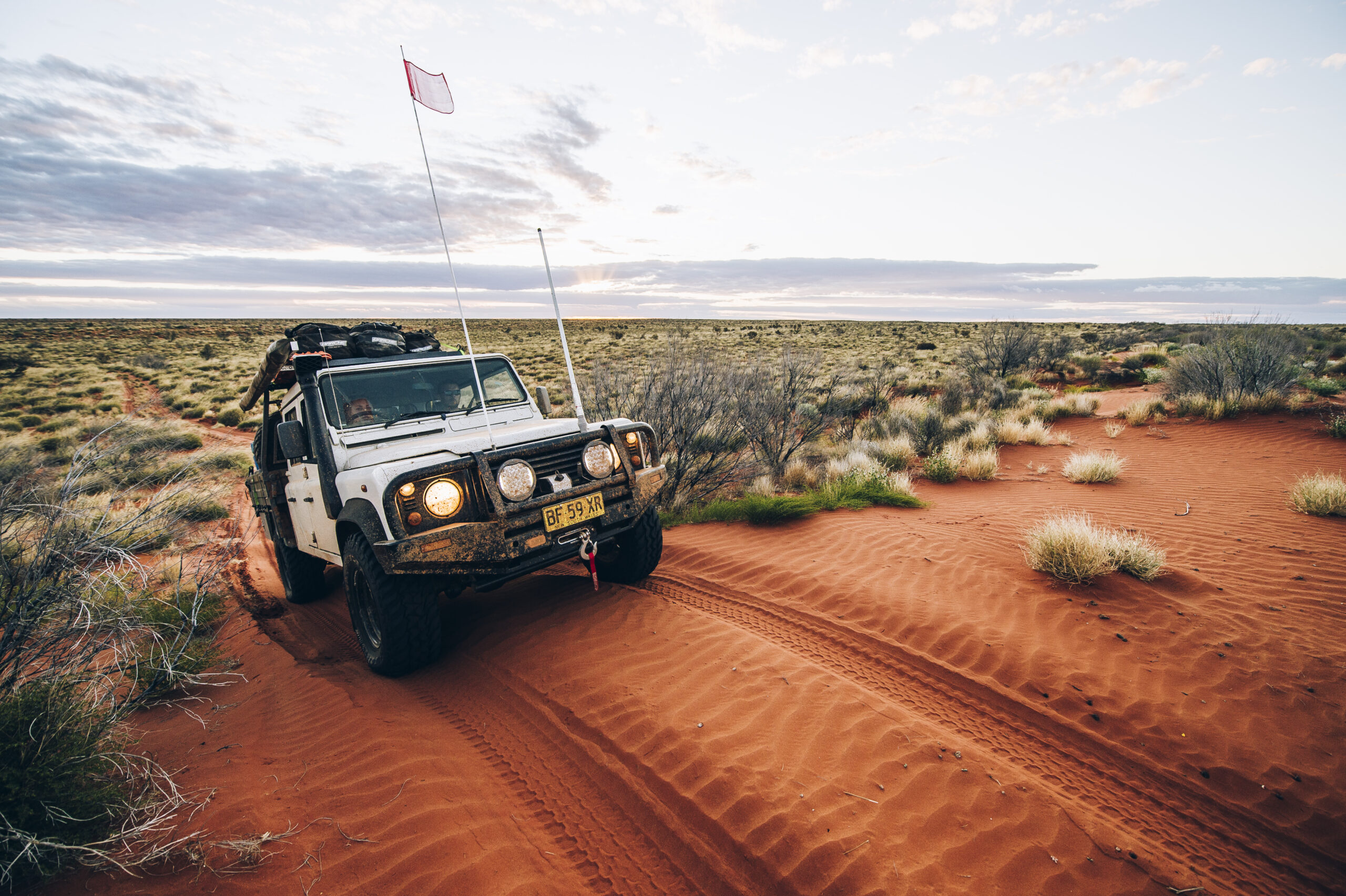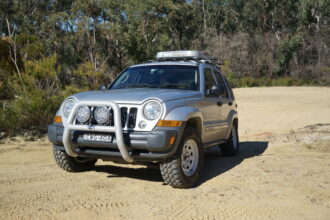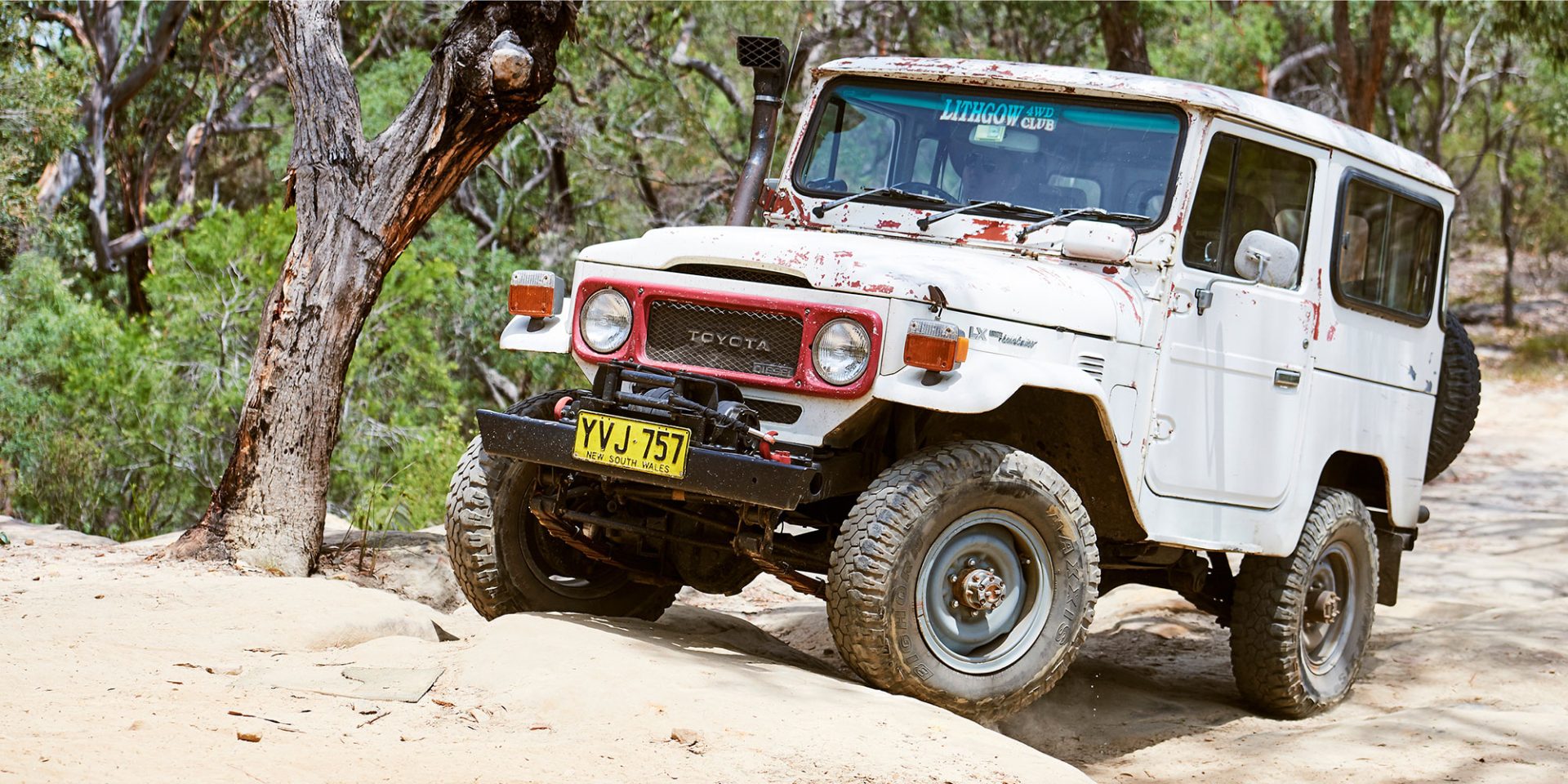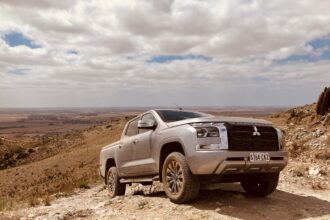Aren’t you over seeing the same 4X4s gracing the pages of off-road magazines? The world doesn’t revolve around 80 Series LandCruisers or GQ Patrols. Even though they are sensational four wheel drives, I’m certainly sick of reading the same articles about how to build them. So what if you are looking for something a little different to the norm when it comes to buying your next four wheel drive? Well, what we have assembled here is a quirky list of 4X4s you might not have ever considered or even heard of. Or, if you are like me and have an unhealthy obsession with all things with a transfer case, you might have wondered what each one of these alternatives would look like with a bit of lift and some taller tyres, maybe some bar work…

Asia Rocsta
They might look like the result of a drunken one-night stand between a Suzuki Sierra and a Jeep CJ, but is that such a bad thing? The Asia Rocsta is definitely a no-frills off-roader, which is evident when looking at the solid axles and leaf springs at both ends.
Kia is responsible for distributing the Rocsta (Kia owns Asia Motors), and the engines used are Mazda units (the diesels are badged as Kia motors yet are copies of the Mazda RF series) that were commonly found in Australia. This means engine and driveline parts are cheap and easy to come by. Body and trim parts are much harder to source though, as not many were sold in Australia (they sold 33 one year… yep, all year). Still, if you are chasing ‘the Jeep thing’ at Suzuki prices, the Asia Rocsta could be a fun toy; but only if you find one cheap enough.

Daihatsu Rocky
Sadly, in 1998 Daihatsu stopped selling the Rocky on the Australian market, replacing it with the Daihatsu Terios of all things. A sad day indeed!
Why the Rocky was never as popular as, say, the Suzuki Sierra I’ll never know. They are powered by bigger engines (the same Toyota Y Series petrol engines were used in the unbreakable HiLux range), and also have a beefier driveline to suit. Early models were available in SWB, LWB or utility.
Suspension consists of solid axles and leaf springs front and rear on early models, with the final Rocky RV Turbo Wagon having front independent suspension, with a coil-sprung live rear axle. This was also powered by a 2.8 litre intercooled turbo-diesel engine, which does a sterling job of moving the smaller Rocky around. Off-road, they have always been good performers. Daihatsu engineers even claim the later Sports Wagon will climb a 46° incline without coughing, and has incline stability of 44 degrees.

Holden Frontera Sport
If you are looking for a fun off-roader, the Frontera Sport is definitely one to investigate. The roof is removable for those who want the wind in their hair sensation (or need a cheap hunting rig), and the interior trim is as colourful as a bowl of fruit loops. But there is more to this vehicle than just colourful seats and a plastic lid.
Take a good look at how long the rear suspension trailing arms are on the Frontera, if you ever get a chance to pop your head under one. They would have to be the longest factory suspension arms I have ever seen! What that translates to is quite amazing levels of rear suspension travel with a few simple tweaks. While the body and electrical system were made in England, the engine is actually German-made and the four wheel drive system was poached from Isuzu. This means upgrades like diff-locks and suspension lifts are easy to source if you do some investigating, as many common parts are shared with the Holden Jackaroo and Rodeo.

Kia Sportage
Yeah, I know I know… a Kia isn’t what you would initially think of when it comes to your ultimate dream machine. But don’t disregard the little Korean that can, it has some very cool features and quite the cult following overseas.
Building one is also quite affordable it seems. For example, the springs from a TJ Wrangler fit the rear of the Sportage and give it a 3-inch lift for a nice easy upgrade, and can then be matched to Toyota Rav 4 shock absorbers.
Diff locks are available from a few outlets overseas, as is differential reduction gearing for helping with larger rubber. Throw in a body lift (35mm seems to be the popular choice rather than 2-inch) and a set of 30×9.5R15 rubber, and you now have an insanely capable wagon for less than the price of an overseas holiday. As for reliability, Korean vehicles tend to suffer more from electrical gremlins than mechanical. Which makes sense, as the engines are Mazda-sourced and are used commonly worldwide.

Mitsubishi IO
The Pajero has a little brother that you might not know about, called the IO (said eeeee-ooooo). It really never took off in Australia, and they certainly aren’t a common sight in the bush. But for the low money they fetch second-hand they’re worth a look, and from most reports, they certainly seem to be holding up well. The live axle in the rear, low-range gearing and typical Mitsubishi tough driveline mean this is actually a small four wheel drive, not another soft-roader. They also look rather stylish, and are relatively comfortable for their size.
Diff locks can be purchased through the aftermarket industry, as the rear diff is the same as used in the older 2.5L and 2.8L SWB Pajeros. A small suspension lift isn’t hard to arrange either; nor slightly larger tyres. Sure, the IO will never win any awards when it comes to suspension travel, but it would be the ideal truck to take camping or to the beach, without using much fuel in the process thanks to the smaller 1.8L or 2.0L petrol engines.

Nissan Terrano
The original Terrano is about a visually appealing as a pair of used socks. But if you can deal with the dated boxy exterior (and interior too, really), these things are absolute bargains. Take one look at the online classifieds, and you will notice many Nissan Terranos have been set up to use as backpackers ‘vans’. This is because they are tough, reliable, simple to work on and have a good usable amount of interior space.
The TD27 four-cylinder engine is one of the best old-school turbo diesels ever produced too, however there are reports of weak auto and manual gearboxes which is a black mark against the driveline’s name. Rust can also be an issue under the rear seats, so definitely have a look there if considering one. Otherwise, a Nissan Terrano would make for a very capable touring vehicle without breaking the bank. Just ensure the previous owner hasn’t towed too much and has regularly serviced the gearbox.

Suzuki Vitara
Considered the original ‘hairdresser’s 4X4’, the Suzuki Vitara would have to be one of the most misunderstood four wheel drives of all time! People love the Sierra, yet write off the old Vit. But when you look at how people are modifying their Sierras, it’s with Vitara engines, brakes, diff gears, power steering and gearboxes in many cases. So in theory, wouldn’t the Vitara be the better choice to modify into a capable off-roader?
I’ve had both, and still own a Sierra. But if I were to do it again a SWB soft-top Vitara would just make more sense. The G16B fuel injected 1.6L engine is the pick of the litter, and makes smooth power with bucketloads of torque from such a small amount of capacity. The 4-speed automatic gearbox behind that engine is also a gem, made by Toyota, and is actually also found in the XJ Cherokee with the 4.0L six cylinder engine… so a 1.6L engine shouldn’t worry it at all!
Anything and everything is available for the Vitara, as they were sold as the Sidekick or Chevy Geo-Tracker in America where aftermarket mods are a dime-a-dozen. Forget the image, the reality is Vitaras are awesome and I don’t care if I lose points for saying so.









